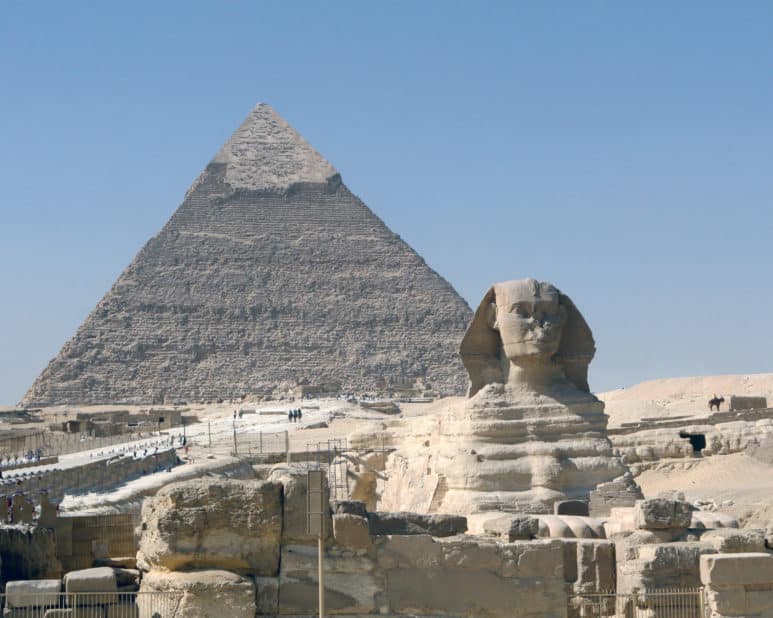When asked about the world’s ancient wonders, most people would automatically think of the Great Pyramids and the Sphinx of Egypt, and it comes as no surprise because both monuments more than live up to their legendary status.
The Great Pyramids in Facts and Figures
Just outside Cairo on the Giza Plateau is the most iconic of all ancient monuments, and at 4,500 years old and rising almost 450 feet into the ancient heavens of the pharaohs, it is a wonder to behold that should be on any Egypt luxury tour and any adventurous traveler’s bucket list.
It’s not until you are standing in the shadow of this manmade giant that you can really appreciate its sheer size, and when you witness it in person, it’s impossible not to wonder just how it was built all those thousands of years ago.
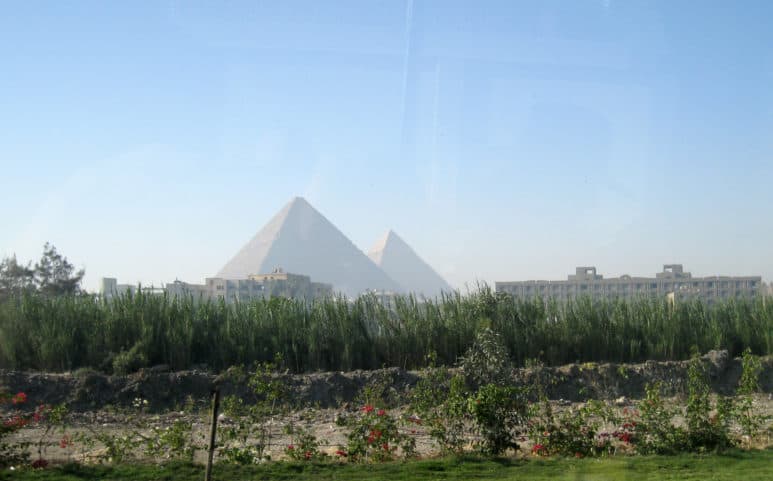
Khufu’s pyramid is the largest and oldest of Giza’s three pyramids, built on the sands of the Sahara Desert beside what is now modern Cairo. It’s believed that the only remaining member of the seven wonders of the ancient world was constructed over a 20-year period, concluding around 2560 BC, and a variety of scientific theories have been put forward regarding its construction techniques.
Some of the more obscure methods even include alien technologies. However, most accepted construction theories are based on the much more earthly idea that it was built by quarrying stone, cutting the blocks, and then dragging and winching them into place. Whether it was done by an army of Greek slaves or thousands of highly skilled workers depends on which theory you believe, but a series of worker’s cemeteries discovered in 1990 suggests they were regarded more highly than mere slaves.
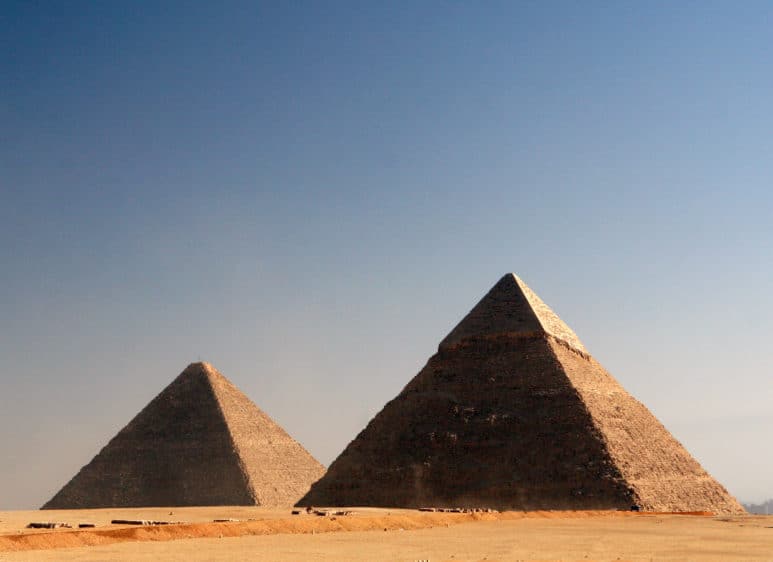
With an estimated mass of almost six million tons, and with more than 2.3 million limestone blocks used, it is surely one of the greatest human achievements of all time. To think on such a grandiose scale, not only the size, but in terms of the architectural endeavor, illustrates just how advanced the ancient Egyptians were, and with their innate majesty, combined with the mystery that shrouds these magnificent structures, a visit to the pyramids is the very epitome of adventure.
The Sphinx Nose, Do You?
Carved in situ from the bedrock of Egypt, the iconic Sphinx simply oozes mystery, and is an essential feature of our pyramids day tours. With its human head atop the body of a mighty lion, the greatest monumental sculpture of the ancient world has been awe-inspiring travelers for thousands of years.
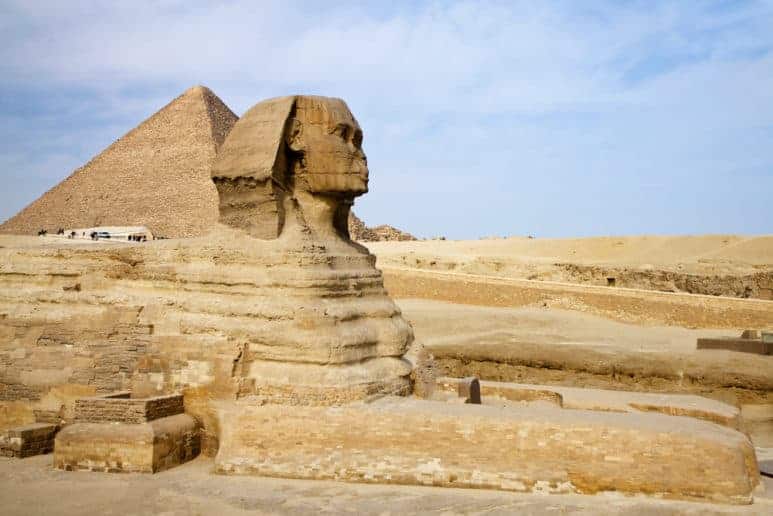
It sits proud on the Giza Plateau as a symbol of strength, power and wisdom, and at a massive 240 feet in length, it’s still as imposing as ever. But did you ever wonder what happened to the Sphinx’s nose?
For centuries people have been hypothesizing about what happened to the nose of the Sphinx, conspicuous by its absence. One popular theory is that Napoleon Bonaparte’s troops used the nose for target practice in their 1798 campaign in Egypt and Syria, smashing it off with a shot from a canon.
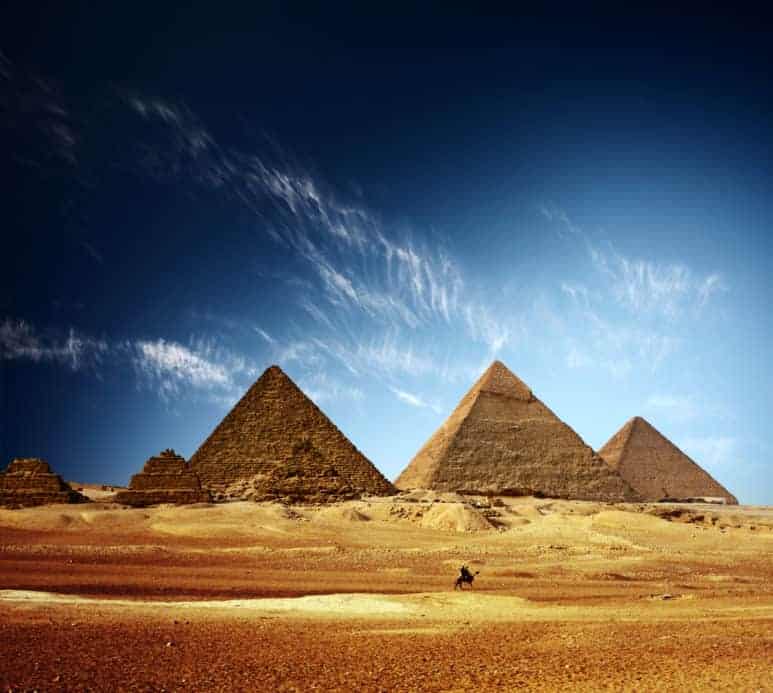
Another interesting and more likely theory was written by historian Muhammad al-Husayni Taqi al-Din al-Maqrizi in the fifteenth century. Al-Maqrizi suggested that a Muslim Sufi from Khanqah demolished the nose in 1378, in order to ‘remedy some religious errors.’ After witnessing Egyptian peasants make offerings to the Great Sphinx, in the hope of controlling the flood cycle to provide a good harvest, the Sufi was outraged by this blatant show of devotion and destroyed the nose. In other words, the vandalism was an early act of iconoclasm, and ultimately led to his execution.
Are you ready to visit the Great Pyramids? Check out our Egypt tours.
